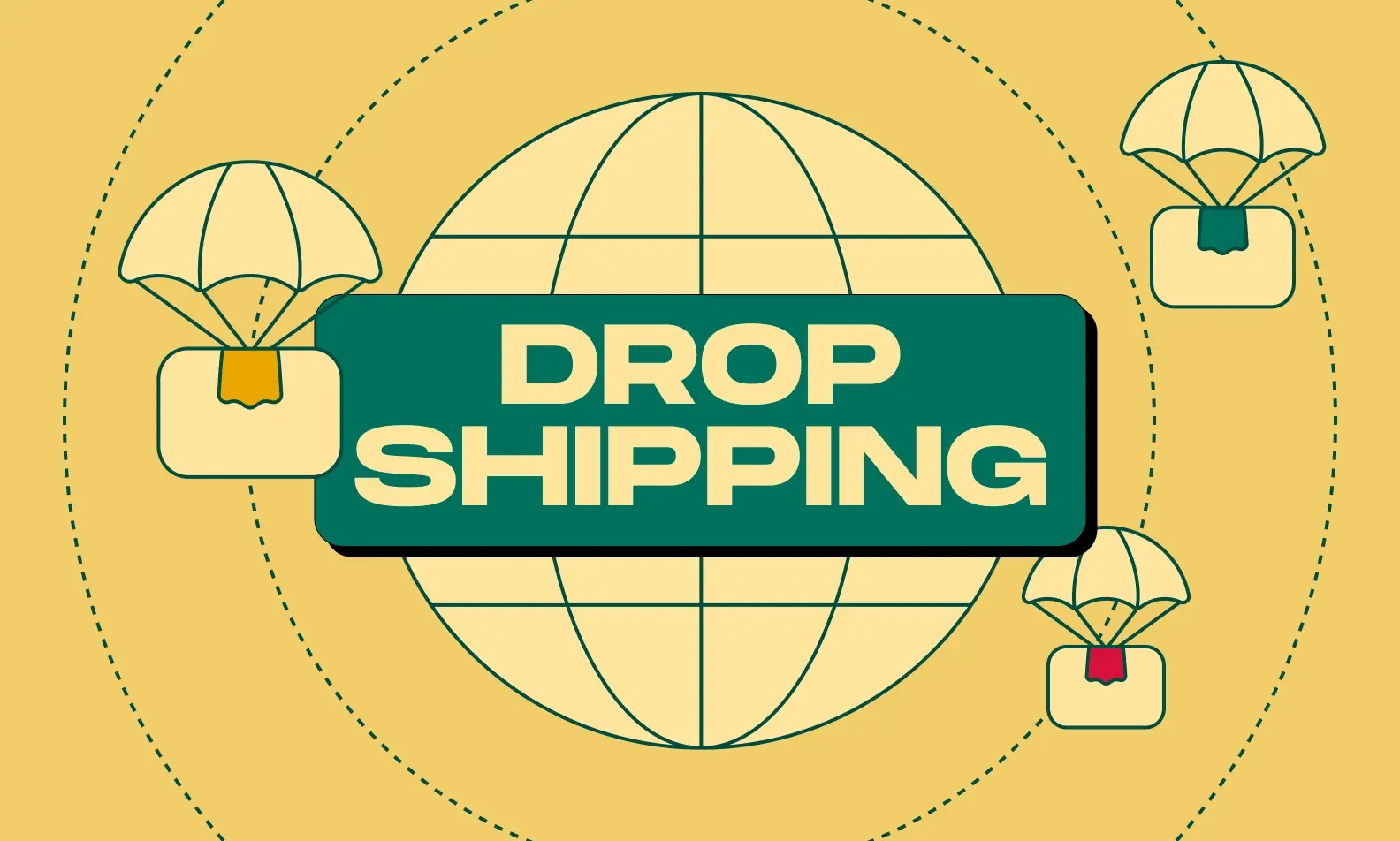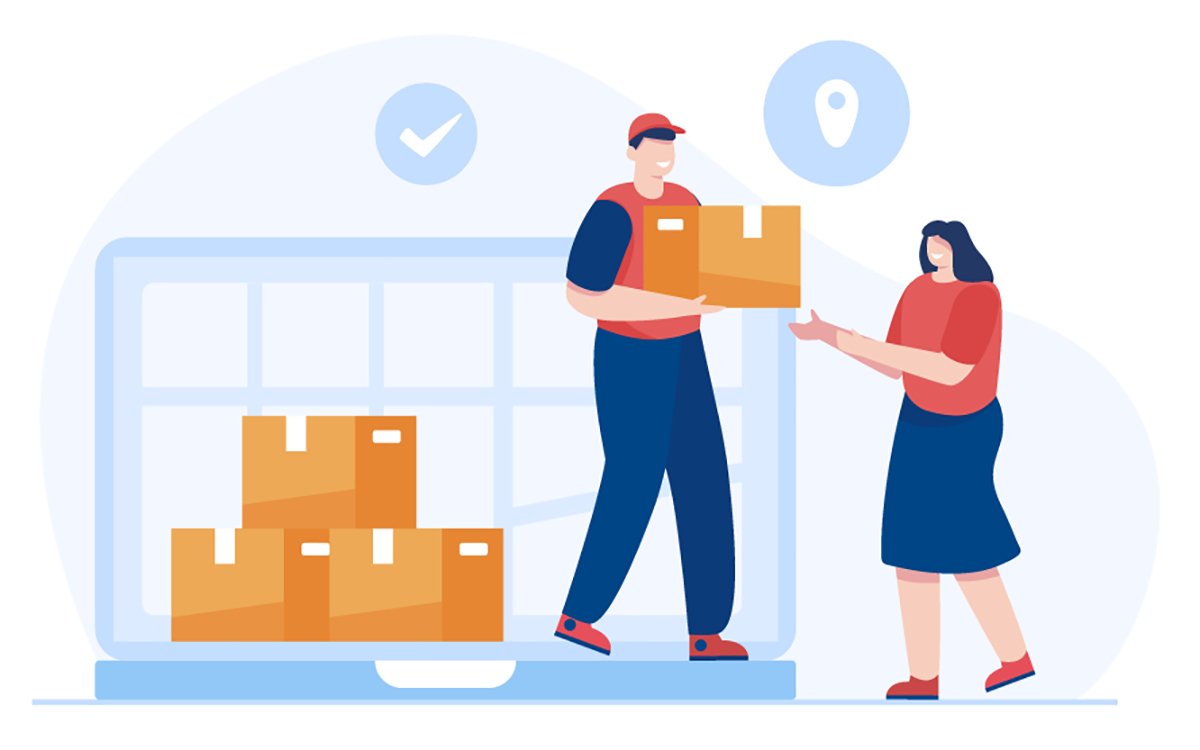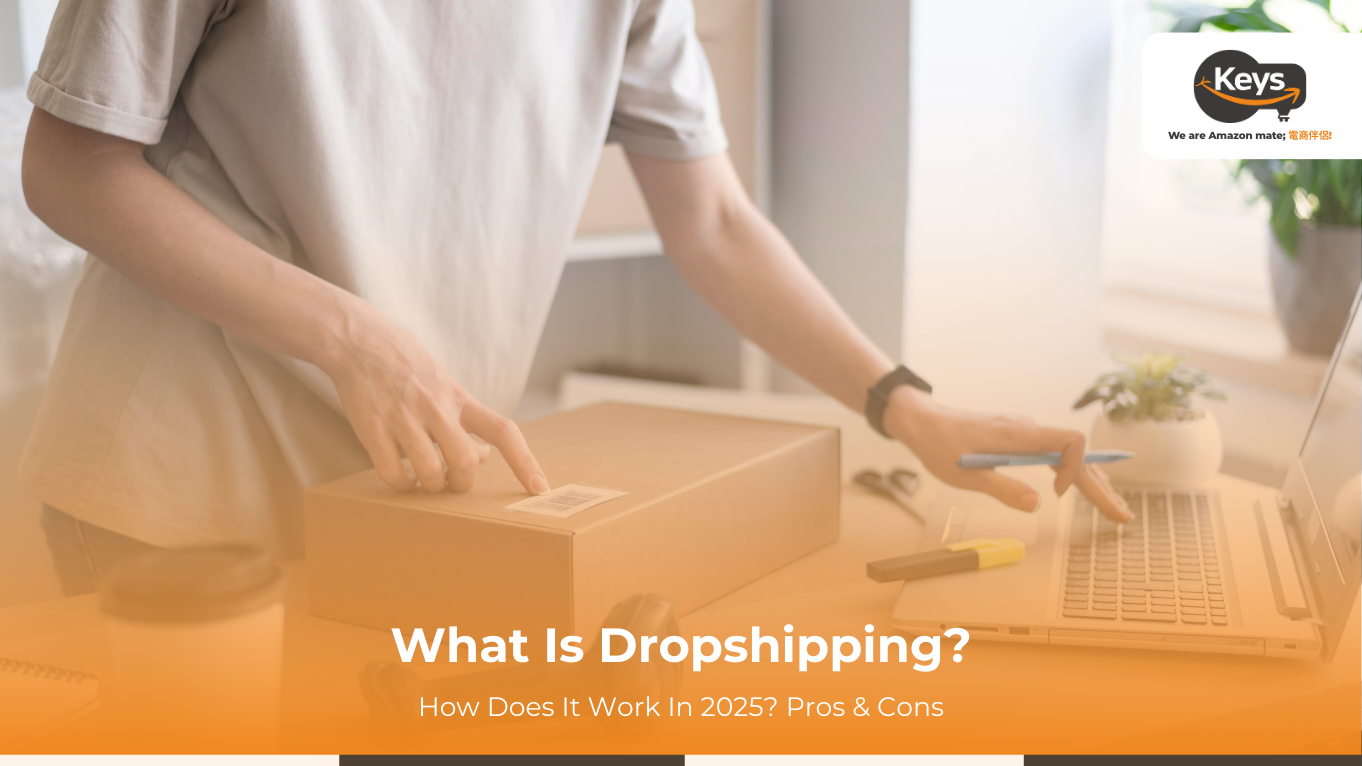In the dynamic world of ecommerce, dropshipping continues to emerge as a popular and low-risk business model. By eliminating the need for inventory management and upfront warehousing costs, dropshipping allows entrepreneurs to sell products directly to customers while relying on suppliers for fulfillment. In this guide, we will explore how dropshipping works in 2025, its advantages, challenges, and tips for building a successful dropshipping business in a highly competitive market.
What is Dropshipping?
Dropshipping is a retail fulfillment method that allows online retailers to sell products without maintaining inventory. Instead of purchasing and storing products, the retailer partners with a supplier who handles inventory management, packaging, and shipping directly to the customer. When a customer places an order, the retailer forwards the order details to the supplier, who then ships the product on behalf of the retailer. This model significantly reduces overhead costs and allows businesses to offer a wide range of products without the risks associated with unsold inventory.

What is a dropshipper?
A dropshipper is an individual or business that acts as an intermediary between the retailer and the supplier. In this model, the dropshipper does not hold any inventory but instead facilitates the sale of products by listing them on their online store. When a customer makes a purchase, the dropshipper processes the order and sends it to the supplier for fulfillment. The dropshipper is responsible for setting the retail price, managing customer service, and ensuring a smooth transaction process, while the supplier handles the logistics of shipping the product directly to the customer.
What are dropshipping suppliers?
Dropshipping suppliers are entities that provide products to retailers who utilize the dropshipping model. These suppliers can be manufacturers, wholesalers, or specialized dropshipping companies that maintain inventory and fulfill orders on behalf of retailers. When a retailer partners with a dropshipping supplier, they gain access to a wide variety of products without the need for upfront investment in inventory. The supplier is responsible for storing, packaging, and shipping the products directly to the customer, allowing the retailer to focus on marketing and customer engagement.

How does dropshipping work?
Dropshipping is a streamlined retail fulfillment method that allows businesses to sell products without holding inventory. The process involves several key steps that facilitate efficient order management and customer satisfaction.
Step 1: Establish a partnership with a Dropshipping Supplier
The first step in the dropshipping process is to establish a partnership with a reliable dropshipping supplier. This supplier will be responsible for storing, packaging, and shipping products directly to your customers. It is crucial to select a supplier that offers quality products, reliable shipping times, and favorable terms to ensure a smooth operational flow.
Step 2: Set up your online store
Once a partnership is established, the next step is to set up your online store. This involves creating a user-friendly e-commerce platform where you can showcase the products offered by your dropshipping supplier. The store should include product descriptions, pricing, and images that appeal to your target audience. Integrating a dropshipping app can help automate inventory management and order processing.
Step 3: Customer places an order
When a customer visits your online store and places an order, they complete the checkout process as they would in any traditional retail environment. The customer pays for the product, and you receive an order confirmation, which includes the details necessary for fulfillment.

Step 4: Send the order to your supplier
After receiving the order, you must promptly forward the order details to your dropshipping supplier. This step can be automated through dropshipping applications, which streamline the communication between your store and the supplier, ensuring that order details are accurately transmitted.
Step 5: Supplier handles order processing and shipment
Once the supplier receives the order, they take over the fulfillment process. This includes picking, packing, and shipping the product directly to the customer. Many suppliers offer branded invoices and packaging, which can enhance the customer’s unboxing experience and reinforce your brand identity.
Step 6: Customer receives the product
Finally, the customer receives their product, shipped directly from the supplier. At this stage, your role as the retailer is to manage any customer service inquiries, such as tracking shipments or handling returns. Effective communication and support are essential to maintaining customer satisfaction and loyalty.

Benefits of dropshipping
Dropshipping offers a range of compelling advantages that make it an attractive model for both new and seasoned ecommerce entrepreneurs. Here’s a detailed look at its key benefits:
- Low startup costs: One of the primary benefits of dropshipping is the low startup costs involved. Entrepreneurs can launch their online stores without the need for significant capital investment in inventory, making it accessible for those with limited financial resources.
- Wide product selection: Dropshipping allows retailers to offer a vast range of products without the constraints of physical inventory. This flexibility enables businesses to quickly adapt to changing market trends and customer preferences by easily adding or removing products from their catalogs.
- No need for warehousing: With dropshipping, there is no requirement for warehousing, as suppliers handle inventory storage. This not only reduces overhead costs but also simplifies logistics management, allowing retailers to focus on other aspects of their business.
- Operate from anywhere: The dropshipping model provides the flexibility to operate from virtually anywhere with an internet connection. This allows entrepreneurs to manage their businesses remotely, enhancing work-life balance and enabling travel while maintaining operations.
- Simple and automated processes: Dropshipping often incorporates automation tools that simplify various processes, including order processing, inventory management, and customer communication. This efficiency allows business owners to concentrate on marketing and customer engagement rather than logistical challenges.
- No product development costs: Entrepreneurs do not need to invest in product development or manufacturing, as they can source existing products from suppliers. This significantly lowers the financial risk associated with launching new products, allowing businesses to focus on sales and marketing.
- Easy to scale: Dropshipping enables businesses to scale operations quickly and efficiently. As demand increases, retailers can easily expand their product offerings without the need for additional inventory management or storage solutions, making it a highly adaptable business model.
Challenges of dropshipping
While dropshipping offers numerous advantages, it also presents several challenges that entrepreneurs must navigate to ensure success in their e-commerce ventures. Understanding these challenges is crucial for developing effective strategies to mitigate their impact.
- Lower profit margins: One of the most significant challenges of dropshipping is the lower profit margins associated with the model. Due to the competitive nature of the market, many dropshippers face pressure to keep prices low, which can lead to reduced profitability. Additionally, the costs associated with using third-party suppliers can further erode margins, making it essential for dropshippers to find ways to differentiate their offerings and add value to their services .
- Inventory volatility: Dropshippers often rely on suppliers for inventory management, which can lead to volatility in product availability. Fluctuations in stock levels can result in stock outs or delays in fulfilling customer orders, negatively impacting customer satisfaction. It is crucial for dropshippers to maintain strong communication with suppliers and implement inventory management systems to minimize these risks.
- Shipping complexities: The logistics of shipping can be particularly complex in a dropshipping model. Since products are shipped directly from suppliers to customers, managing shipping times and costs can be challenging. Variability in shipping speeds, potential delays, and the need for accurate tracking can complicate the customer experience. Dropshippers must work closely with suppliers to ensure reliable shipping practices and clear communication with customers regarding delivery expectations.

Is dropshipping right for your business?
Determining whether dropshipping is the right model for your business involves evaluating several key factors:
Is marketing your primary focus?
If your strengths lie in marketing and driving traffic to your online store, dropshipping can be an excellent fit. This model allows you to concentrate on customer acquisition and engagement rather than logistics and inventory management.
Do you prioritize sales over brand development?
Dropshipping is ideal for businesses focused on generating high sales volumes rather than building a unique brand identity. The model typically offers limited opportunities for branding, as products are often generic and sourced from multiple suppliers.
Are you aiming to offer a diverse product range?
If you want to provide a wide variety of products without the burden of inventory, dropshipping is advantageous. This flexibility allows you to quickly adapt your offerings based on market trends and customer preferences.
What are your expectations for shipping speed?
Consider your customers’ expectations regarding shipping times. If you partner with international suppliers, be prepared for longer shipping durations, which may affect customer satisfaction. Managing these expectations is crucial for success in dropshipping.
Are you aware of the operational challenges involved?
Dropshipping comes with operational challenges, including managing supplier relationships, inventory volatility, and shipping complexities. Being aware of these issues is essential for developing effective strategies to mitigate their impact.

What is your available startup capital?
Dropshipping requires minimal upfront investment, making it accessible for entrepreneurs with limited capital. However, you should still budget for marketing and operational expenses to ensure a successful launch.
What profit margins are you targeting?
Profit margins in dropshipping can be lower due to high competition and reliance on third-party suppliers. It’s important to set realistic margin expectations and explore ways to differentiate your offerings to enhance profitability.
Are you ready to handle supply chain and inventory issues?
As a dropshipper, you will need to manage relationships with suppliers and address any inventory issues that arise. Being proactive in communication and inventory management is vital to maintaining a smooth operation.
How will you manage returns, refunds, and replacements?
You will be responsible for handling customer service issues, including returns and refunds. Establishing clear policies and maintaining open communication with suppliers can help streamline this process.
How will you address customer fulfillment questions and concerns?
As the point of contact for customers, you must be prepared to address fulfillment inquiries effectively. Providing timely responses and clear information about order status can enhance customer satisfaction and loyalty.
How to build a dropshipping business in 2025
Building a successful dropshipping business in 2025 requires a strategic approach that combines careful market analysis, reliable partnerships, and strong brand positioning. Here are essential steps to help you establish a competitive and scalable operation:
- Select a niche: While dropshipping allows for a broad product range, choosing a specialized niche helps differentiate your brand and target a clearly defined audience. Focusing on a niche also facilitates more effective marketing and brand loyalty development.
- Conduct competitor research: Before finalizing your niche, conduct comprehensive competitor analysis. Highly saturated markets with dominant brands may present significant entry barriers. Opting for underserved or emerging niches can enhance your brand’s growth potential.
- Find a Quality Dropshipper: Partner with reputable dropshipping suppliers known for accurate, on-time deliveries and high-quality products. A reliable supplier network is critical for maintaining customer satisfaction and building a resilient fulfillment chain.
- Create an Online Store: Develop a branded ecommerce website that showcases your product catalog and reflects your brand identity. This platform serves as the central hub for customer engagement and trust-building, whether selling independently or through marketplaces like Amazon and Shopify.
- Encourage sales with marketing: Utilize a multi-channel marketing strategy including paid advertising on search engines and social media platforms. Leveraging targeted ads, SEO, and content marketing can drive traffic to your storefront and improve conversion rates.
- Analyze and optimize listings: Monitor store analytics to track performance metrics, customer behaviors, and sales trends. Use these insights to optimize product listings, introduce high-demand items, and adjust pricing strategies to stay competitive and maximize profitability.

Tips for dropshipping success
Achieving success in dropshipping requires a strategic approach that encompasses various aspects of the business model. Here are essential tips to help you thrive in the competitive dropshipping landscape:
- Choose the right product category: Selecting a profitable and trending product category is crucial for your dropshipping business. Focus on niches that align with your interests and have a steady demand. Conduct thorough market research using tools like Google Trends to identify products that are gaining traction and have low competition.
- Find reliable dropshipping suppliers: Partnering with trustworthy suppliers is vital for maintaining product quality and ensuring timely order fulfillment. Research potential suppliers by reading reviews and assessing their reliability. Establish strong communication channels to address any issues that may arise and consider using dropshipping platforms that connect you with multiple suppliers.
- Calculate pricing and profitability: Understanding your cost structure is essential for setting competitive prices while maintaining healthy profit margins. Calculate all expenses, including product costs, shipping fees, and marketing expenses, to determine your pricing strategy. Aim for a balance that attracts customers while ensuring profitability.
- Offer excellent customer service: Providing outstanding customer service can set your dropshipping business apart from competitors. Respond promptly to customer inquiries, handle returns and refunds efficiently, and maintain clear communication throughout the order process. A positive customer experience can lead to repeat business and referrals.
- Test new products: Regularly testing new products can help you stay ahead of market trends and customer preferences. Use limited-time promotions or small advertising budgets to gauge interest in potential new offerings. This approach allows you to make data-driven decisions about which products to scale in your store.

Drop shipping versus other types of ecommerce
Understanding how dropshipping compares to other types of ecommerce can help entrepreneurs make informed decisions about their business strategies.
| Feature | Dropshipping | Traditional Ecommerce |
| Inventory Management | Retailers do not hold inventory; orders are fulfilled by third-party suppliers, minimizing upfront investment and inventory risk. | Businesses purchase products in bulk, manage their own inventory, and handle fulfillment, requiring significant upfront investment. |
| Profit Margins | Generally lower profit margins due to reliance on suppliers and competitive pricing pressures. | Higher profit margins are possible as retailers can buy wholesale and set their own retail price. |
| Control Over Product Quality | Limited control over product quality since retailers do not handle the products directly, leading to variability. | Greater control over product quality as businesses can inspect and manage their inventory before sale. |
| Shipping and Fulfillment | Shipping is managed by suppliers, which can result in longer delivery times and complexities in tracking orders. | Retailers have direct control over shipping methods and fulfillment processes, allowing for customized delivery options. |
| Scalability | Allows for rapid scalability without the need for additional inventory investment, though limited by supplier capacity. | Scaling requires significant investment in inventory and logistics infrastructure. |
Drop ship fulfillment alternatives
While dropshipping is a popular ecommerce model, there are several alternatives that can provide different advantages and operational efficiencies. Here are three notable alternatives to dropship fulfillment:
Retail arbitrage
This model involves purchasing products at a lower price from retail stores and reselling them at a higher price on platforms like Amazon or eBay. Retail arbitrage requires minimal upfront investment and allows for quick profit realization. However, it also comes with challenges such as price volatility and the need for constant inventory sourcing. Retail arbitrage can be an effective way to capitalize on market fluctuations and clearance sales, but it demands diligent market research and adaptability.

Create your own Private label
Developing a private label brand involves sourcing products from manufacturers and selling them under your own brand name. This model allows for greater control over product quality, branding, and pricing, leading to potentially higher profit margins. However, it requires a more significant upfront investment in product development and marketing, as well as a longer time frame to establish brand recognition and customer loyalty. Private labeling can be a lucrative option for those willing to invest time and resources into building a unique brand identity.
Traditional ecommerce
This model involves purchasing inventory in bulk and managing the entire fulfillment process, including storage, shipping, and customer service. Traditional ecommerce provides retailers with complete control over their inventory and fulfillment strategies, allowing for customized shipping options and potentially faster delivery times. However, it also requires a higher initial investment and ongoing management of stock levels, which can increase operational complexity. This model is suitable for businesses that can handle the logistics and are looking to build a sustainable brand with a loyal customer base.
Keys Logistics: Trusted Third Party Logistic (3PL) Provider
Keys Logistics is a leading third-party logistics (3PL) provider specializing in global warehousing, fulfillment, and dropshipping solutions for businesses of all sizes. We operate self-owned fulfillment centers across key international trade markets, including the US, UK, and Germany, along with processing hubs in Hong Kong, Vietnam, Shenzhen, and Dongguan. Our services are tailored to support merchants on major e-commerce platforms such as Amazon, TikTok, SHEIN, TEMU, and independent online stores.
With a strong focus on one-piece fulfillment, we help e-commerce businesses streamline operations, improve order processing speed, and reduce logistics costs – allowing brands to focus on growth rather than warehousing and inventory management. Our dropshipping services provide flexible, cost-effective solutions without the need for heavy investment in infrastructure or labor, making us an ideal logistics partner for small to medium-sized enterprises.
Keys Logistics is committed to delivering accurate inventory control, fast order turnaround, and reliable global shipping. Whatever you entrust, Keys Logistics delivers – your trusted partner in cross-border fulfillment and dropshipping success.
Mastering Dropshipping in 2025 requires a blend of smart product selection, reliable supplier partnerships, and a deep understanding of logistics operations. While dropshipping offers flexibility and scalability, success depends on navigating its challenges strategically. By partnering with an experienced Third Party Logistic (3PL) Provider like Keys Logistics, businesses can streamline fulfillment and scale globally with confidence. Contact Keys Logistics today to optimize your dropshipping success!












 Tiếng Việt
Tiếng Việt 中文 (中国)
中文 (中国)

